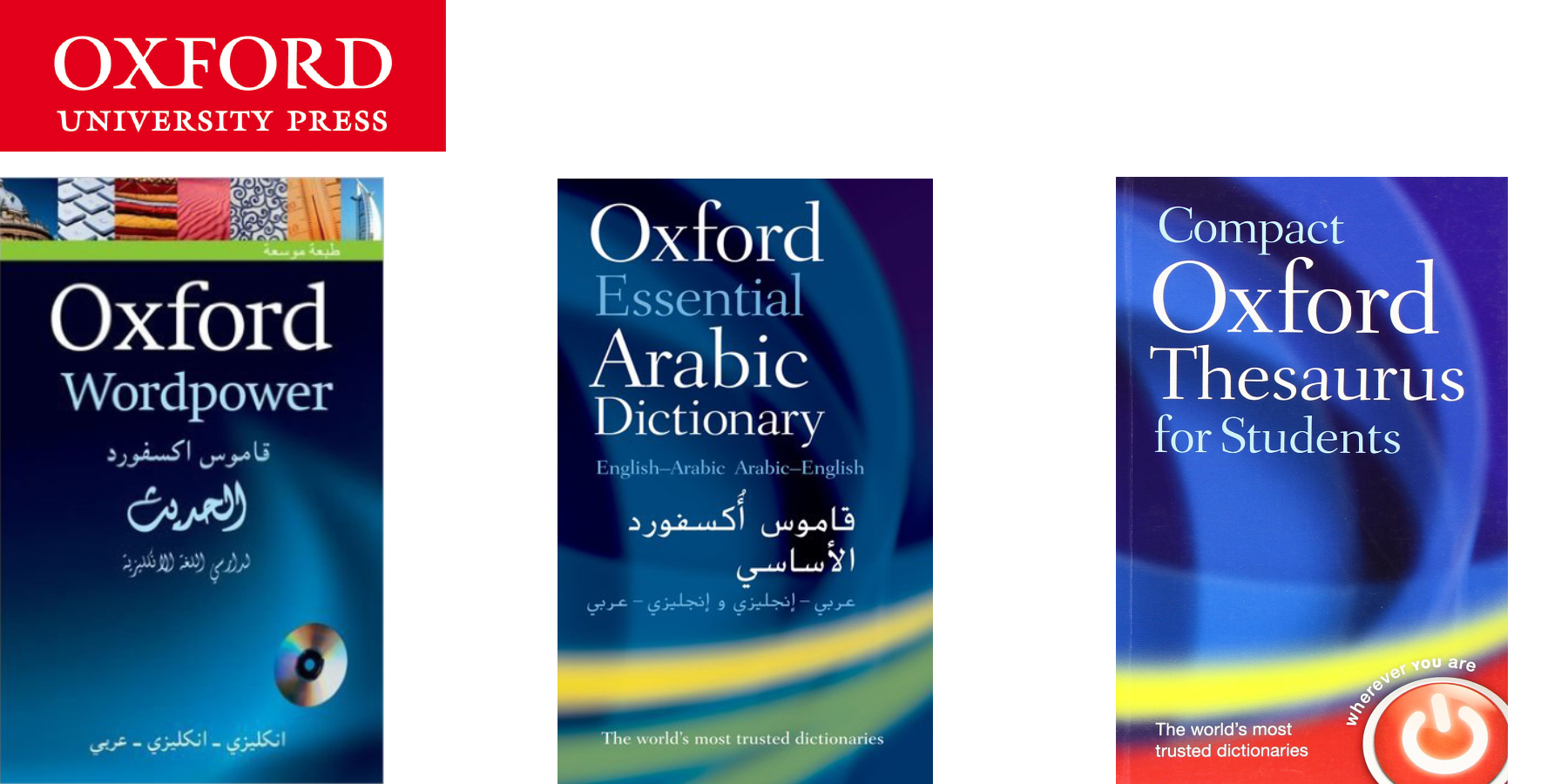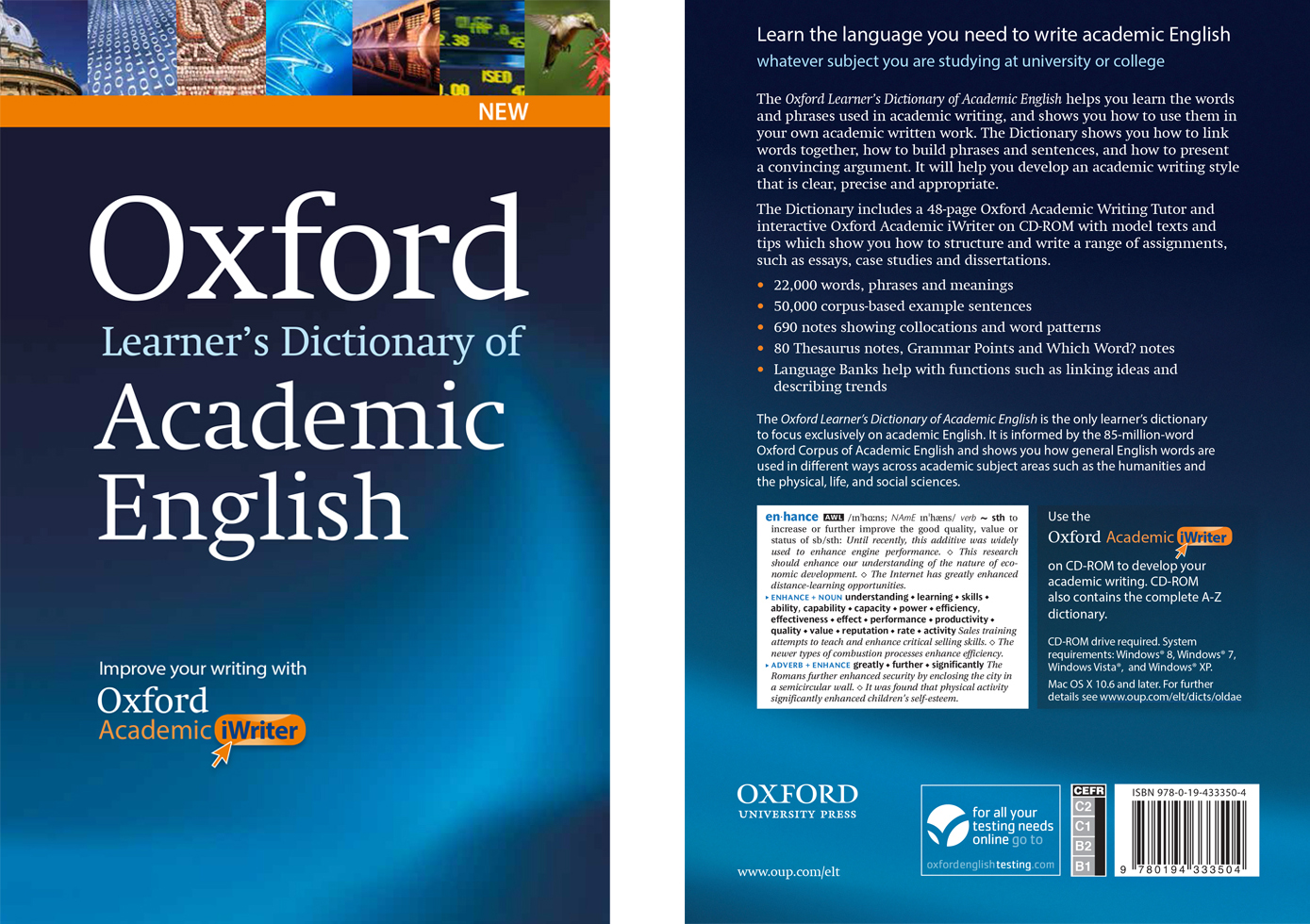Resources > Dictionary skills
Dictionaries are extremely useful when writing in “Academic English” yet, at first, they are difficult to use effectively and efficiently (Nation, 2001, p. 284). Dictionaries are far more than translation tools. Dictionaries such as “Oxford Wordpower” are highly recommended as they provide clear English definitions and Arabic translations as well as examples and associated words.



…
Developing your dictionary skills
It is important to remember that the dictionary can never know the exact context in which the word is being used, so you will have to use your knowledge of the language as well. You will need to:
- Use your knowledge of the language to get information about the grammar of the word you want look up;
- Guess the general meaning of the word in the context;
- Decide if it is necessary to look up the word – can you understand the sentence without it?
- Find the word in the dictionary;
- Choose the correct entry in the dictionary;
- Check the meaning given by the dictionary to see if it fits in the context.

Wordnik is a useful website which aim is to help anyone and everyone better understand any given word (e.g. in addition to the definition/s and meaning/s and spelling, it provides information on the number of syllables, pronunciation and related vocabulary.
Dictionary Skills Worksheets &c.
Error Correction Codes
Academic English OUP–Academic-English–01
Academic English OUP–Academic-English–02
Academic English OUP–Academic-English–03
Academic English OUP–Academic-English–04
Academic English OUP–Academic-English–05
Academic English OUP–Academic-English–06
Academic English OUP–Academic-English–07
Academic English OUP–Academic-English–08
Academic English OUP–Academic-English–09
WordPower Arabic/English Worksheet–01
WordPower Arabic/English Worksheet–02
WordPower Arabic/English Worksheet–03
WordPower Arabic/English Worksheet–04
WordPower Arabic/English Worksheet–05
WordPower Arabic/English Worksheet–06
WordPower Arabic/English Worksheet–07
WordPower Arabic/English Answer Key
…
Dictionaries

This online version of the Cambridge University Press dictionary is aimed primarily at learners of English. As such it, “Concentrates on describing and reflecting as accurately as possible common contemporary English usage.” It therefore excludes particularly uncommon words or words whose use is restricted to a particular field of activity.

The Macmillan Dictionary seeks to, “Make every definition as clear and easy to understand as possible.” It is regularly updated, and includes a thesaurus, fully integrated into each of the entries.

The Oxford Advanced Learner’s Dictionary is the world’s best-selling advanced learner’s dictionary, used by over 35 million learners of English worldwide.


The online version of the Longman dictionary contains over 207,000 words, phrases, and meanings including 7,000 references to people, places, events and organizations.
…
Thesauruses
Thesauruses explain the differences between similar words in written and spoken English. Typically they group words into near synonyms. Each synonym in a given group would them be clearly explained in terms of meaning, grammar, and register plus an example sentence showing how it is used.
…
Concordance tools
A concordance line is a line of text taken from a corpus, i.e. a collection of language texts which are organised and stored on a computer. The concordance line may come from the beginning, the middle or the end of one of the texts. It may be made up of one sentence, part of a sentence or part of two sentences. Each concordance line in a set includes the target word, i.e. the word being studied. The target word is always in the middle of the concordance line. This means that when we study a word in a set of concordance lines we can see its context, in other words, the words which are used before it and after it.
Here is an example of a set of concordance lines for the target word: interested.
1.
Are Gulf Arabs interested in cricket?
2.
But she was not interested in education for its own sake.
3.
Parents are obviously interested in the various skills and…
4…
…to change as more women become interested in outdoor pursuits.
5
In other words, he was not interested, as John was, in proving…
6.
…last month it was said that a range of other interested parties had emerged, including…
Notice that lines 1 and 2 are complete sentences. Lines 3, 4, 5 and 6 are incomplete sentences. Line 4 shows only the end of the sentence; lines 3 and 5 show only the first part of the sentences and Line 6 shows the middle of a sentence.
Analysing concordance lines
Because the target word, interested, is always in the centre, we can easily see common features in its context. If we look at the words used after interested, we can see that it is common to find the preposition in after the adjective interested. We can also see that this is not always true, when we look at Line 6.
What about Line 5? Does it show us the pattern interested in? At first glance it looks as if the preposition as is used, but if we look more carefully, we can see in used later. The phrase as John was is an extra, inserted into the main part of the sentence, to provide a comparison. The use of commas helps us to understand this. If we disregard this added comparison, we see the pattern interested in.
By analysing a set of concordance lines in, students and teachers can learn about how a given word is frequently (but not always) used; i.e. used in context.
…
References
Macmillan English Dictionary. (2007). Macmillan English Dictionary for Advanced Learners (2nd ed.). Macmillan ELT: London.
Nation, P. (2001). Learning Vocabulary in another Language. Cambridge: Cambridge University Press.
Oxford Learner’s Dictionary of Academic English. (2010). Oxford Learner’s Dictionary of Academic English. Oxford University Press: Oxford.
Oxford Learner’s Thesaurus. (2010). Oxford Learner’s Thesaurus: A dictionary of synonyms. Oxford University Press: Oxford.
Oxford Wordpower. (2013). Oxford Wordpower Dictionary for Arabic-speaking learners of English (3rd ed.). Oxford University Press: Oxford.

You must be logged in to post a comment.